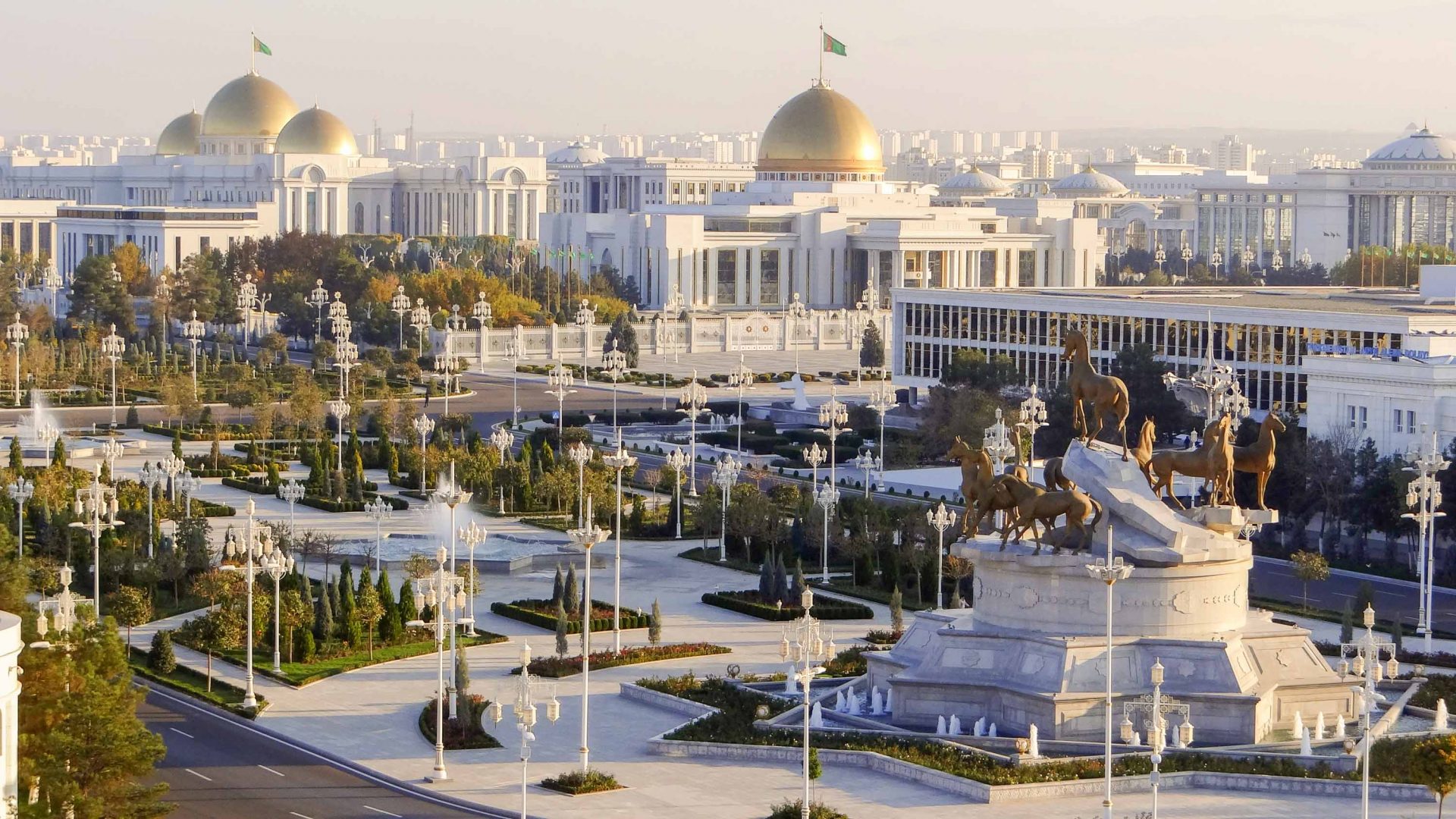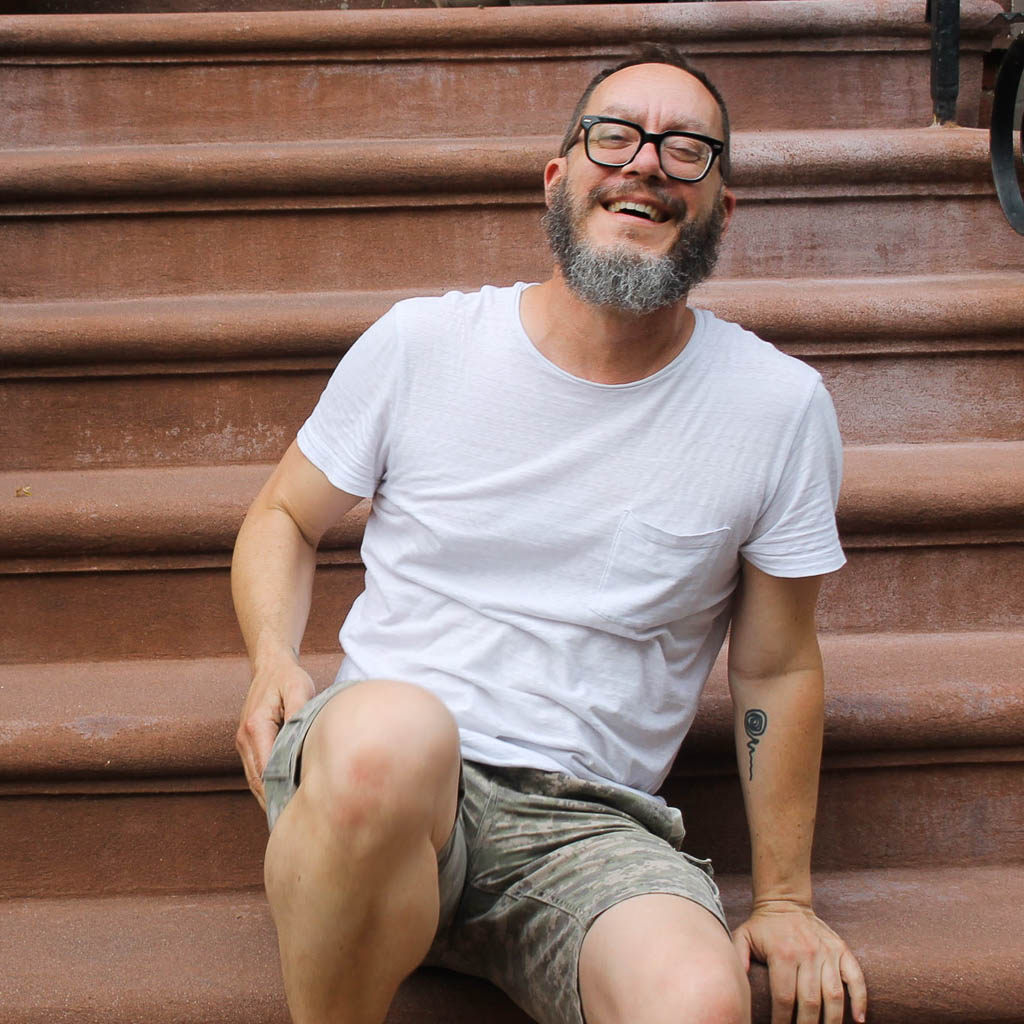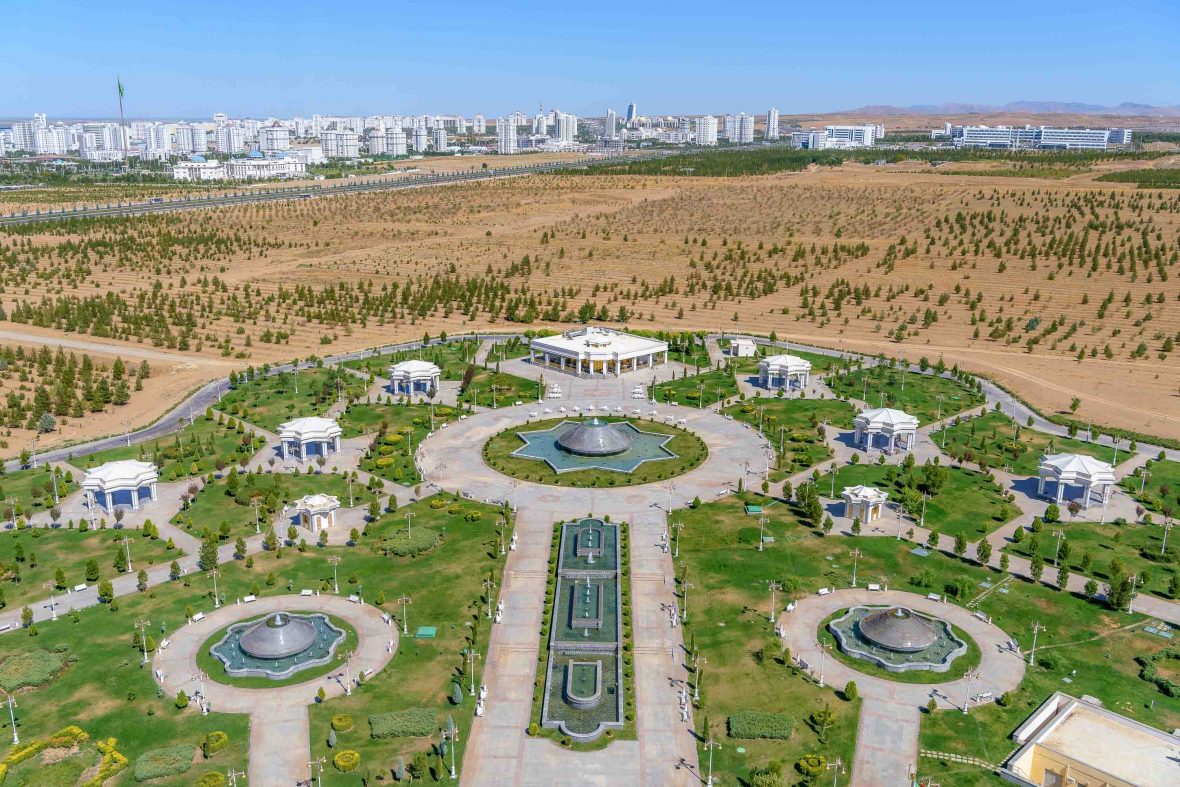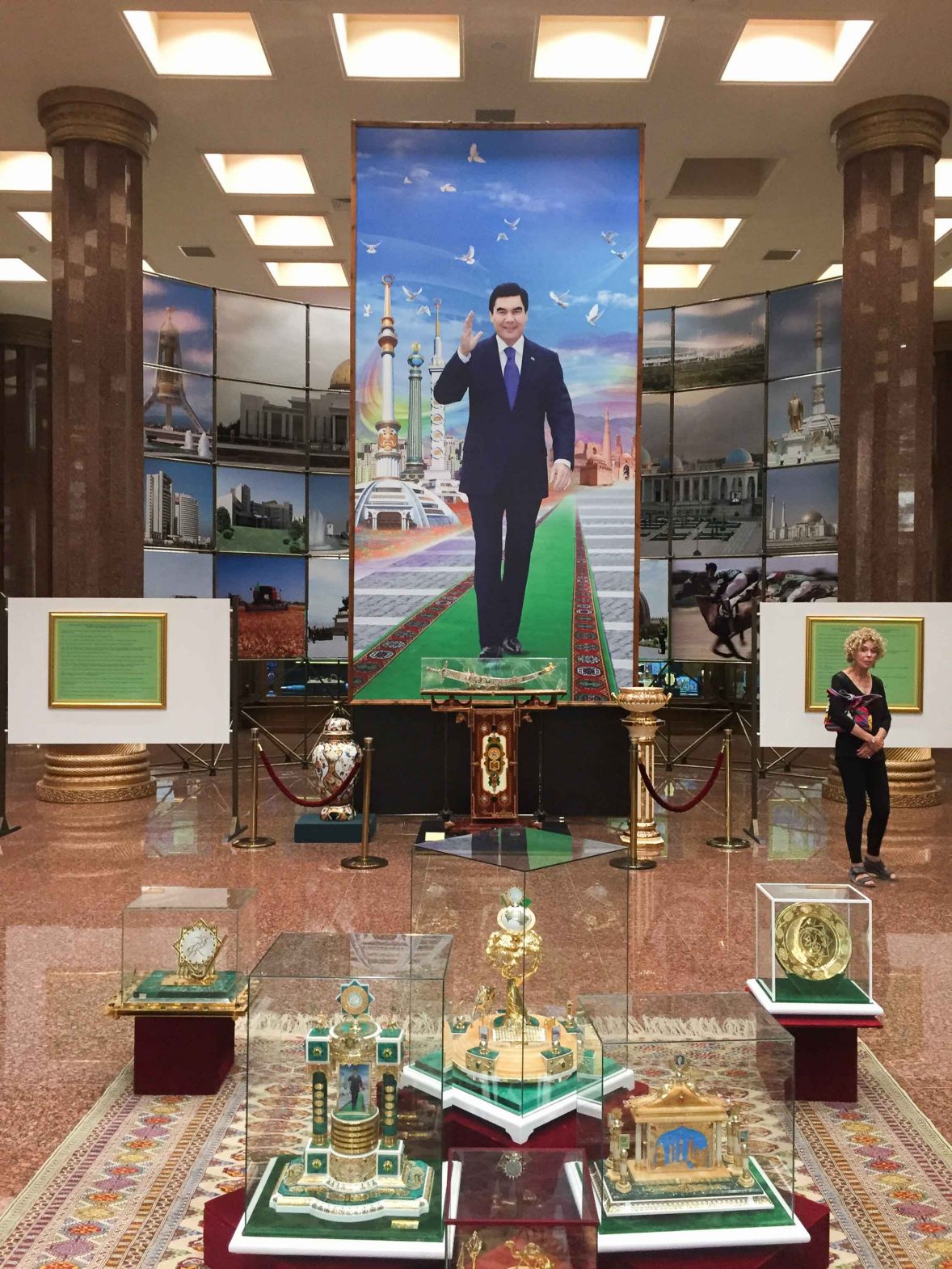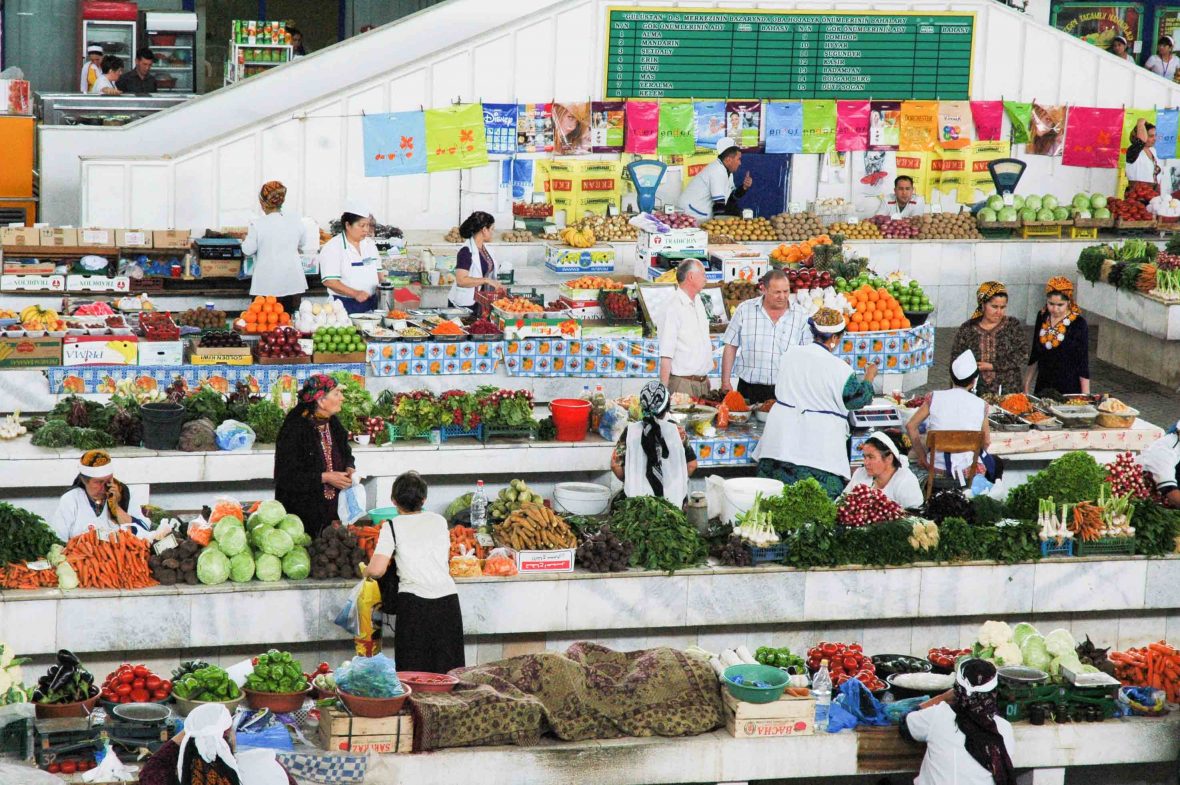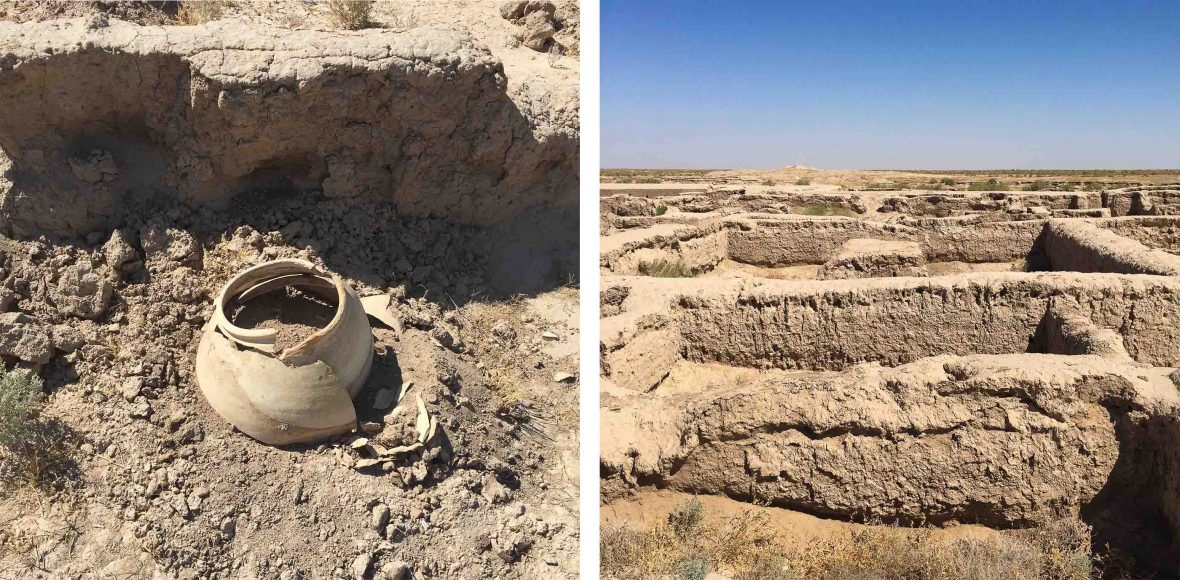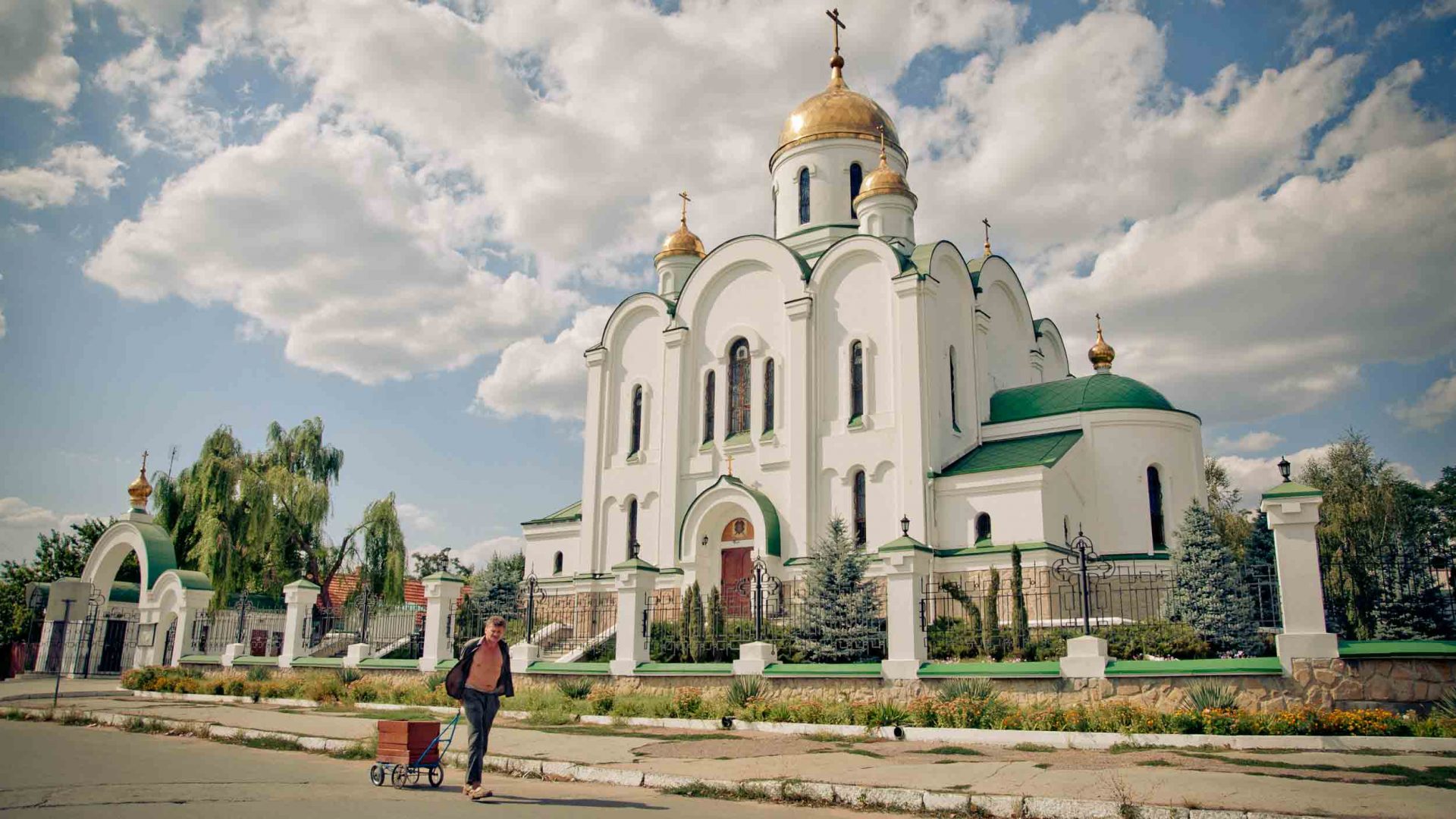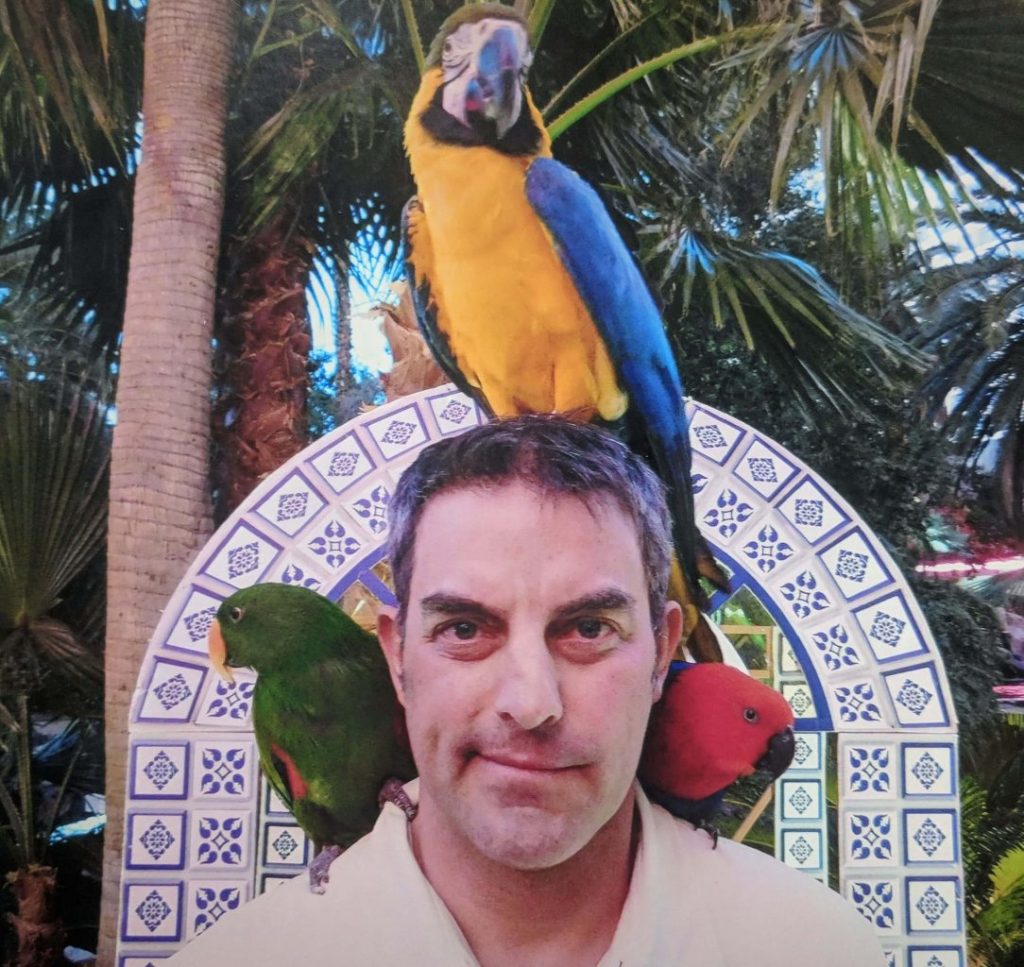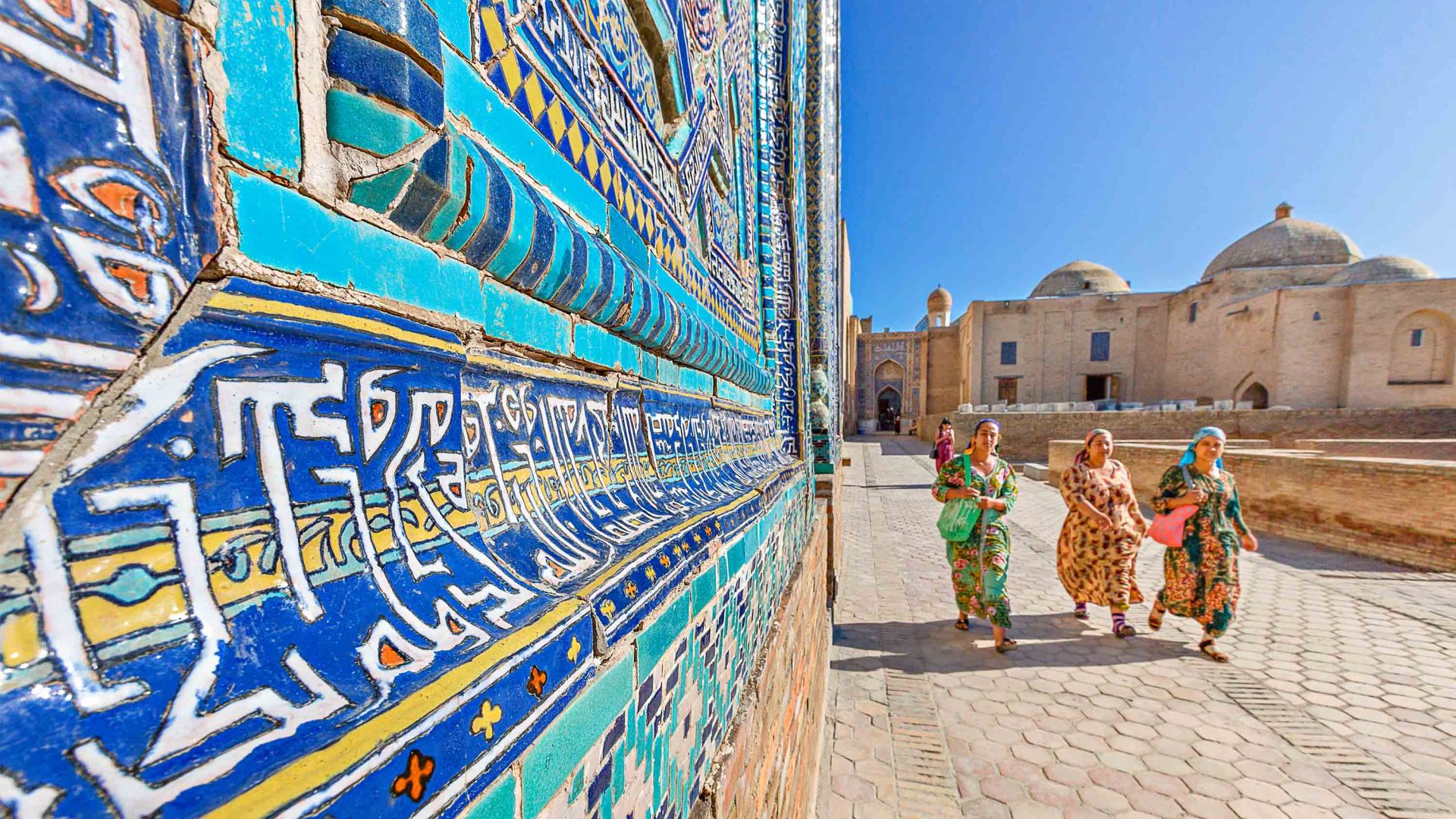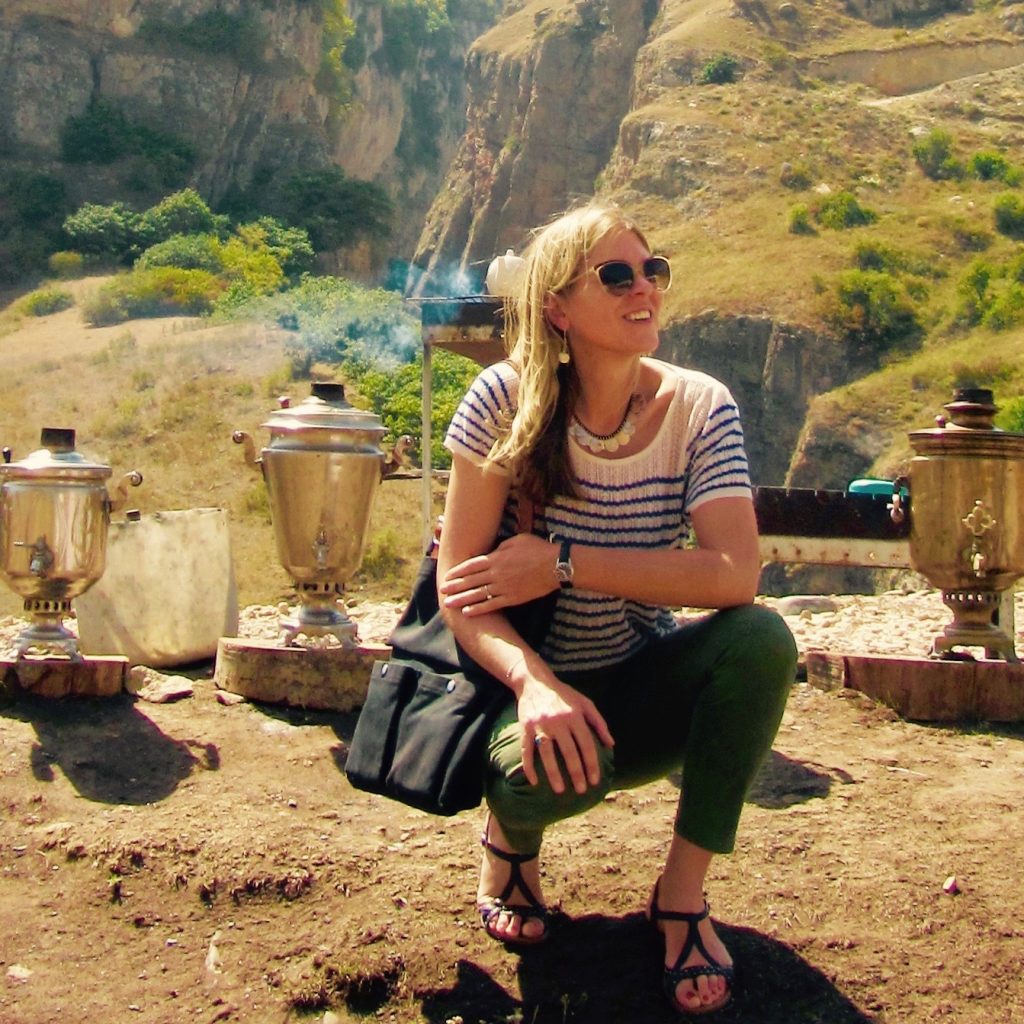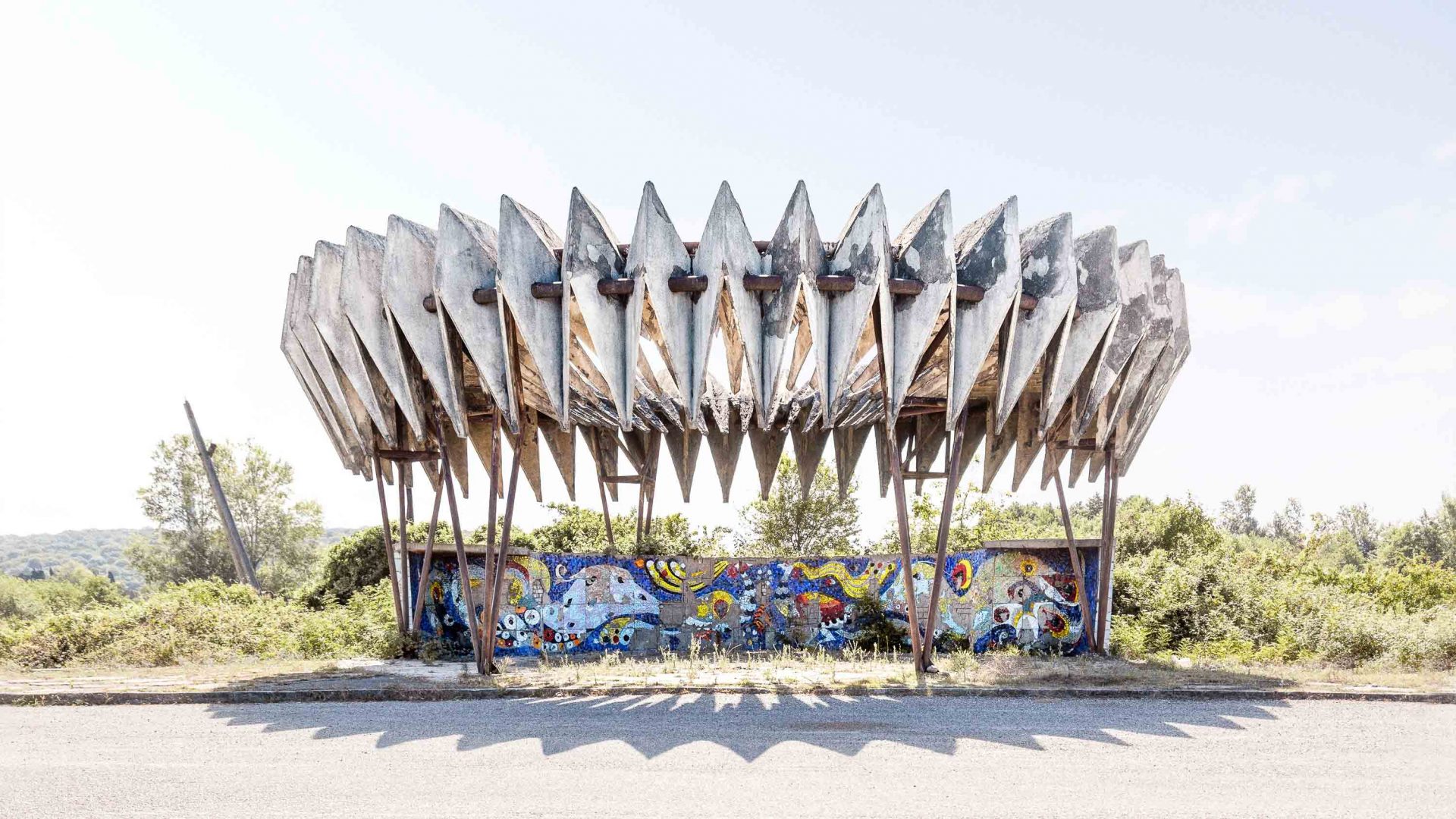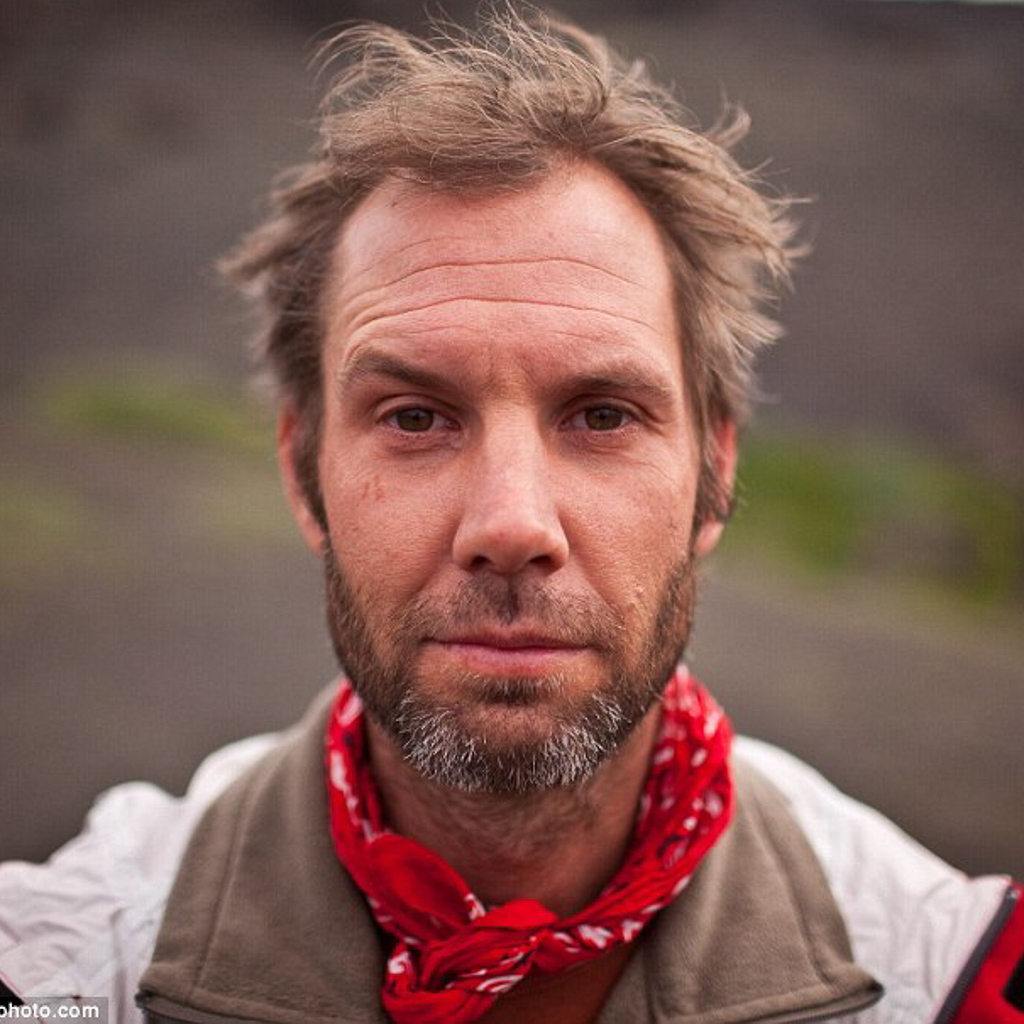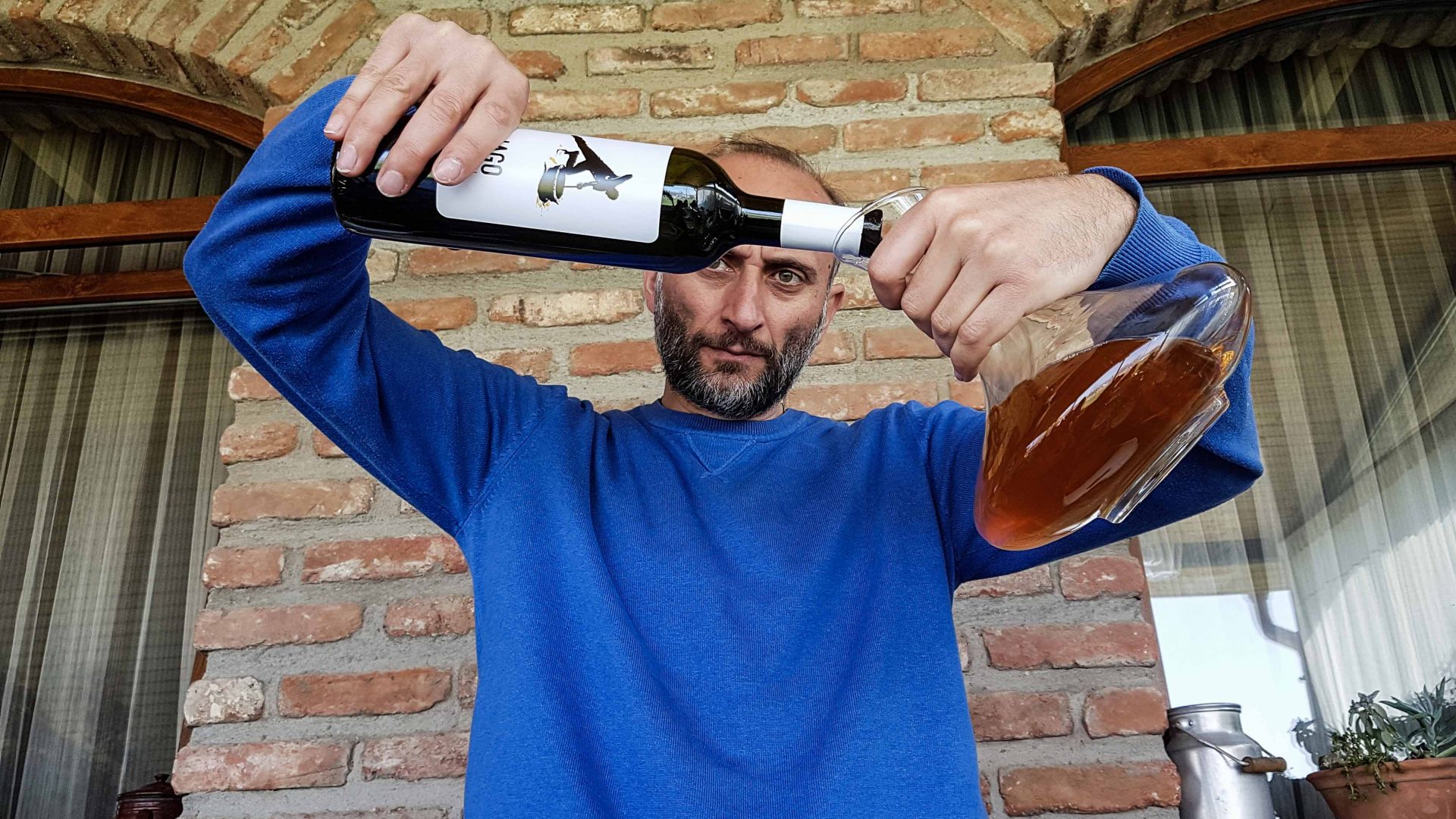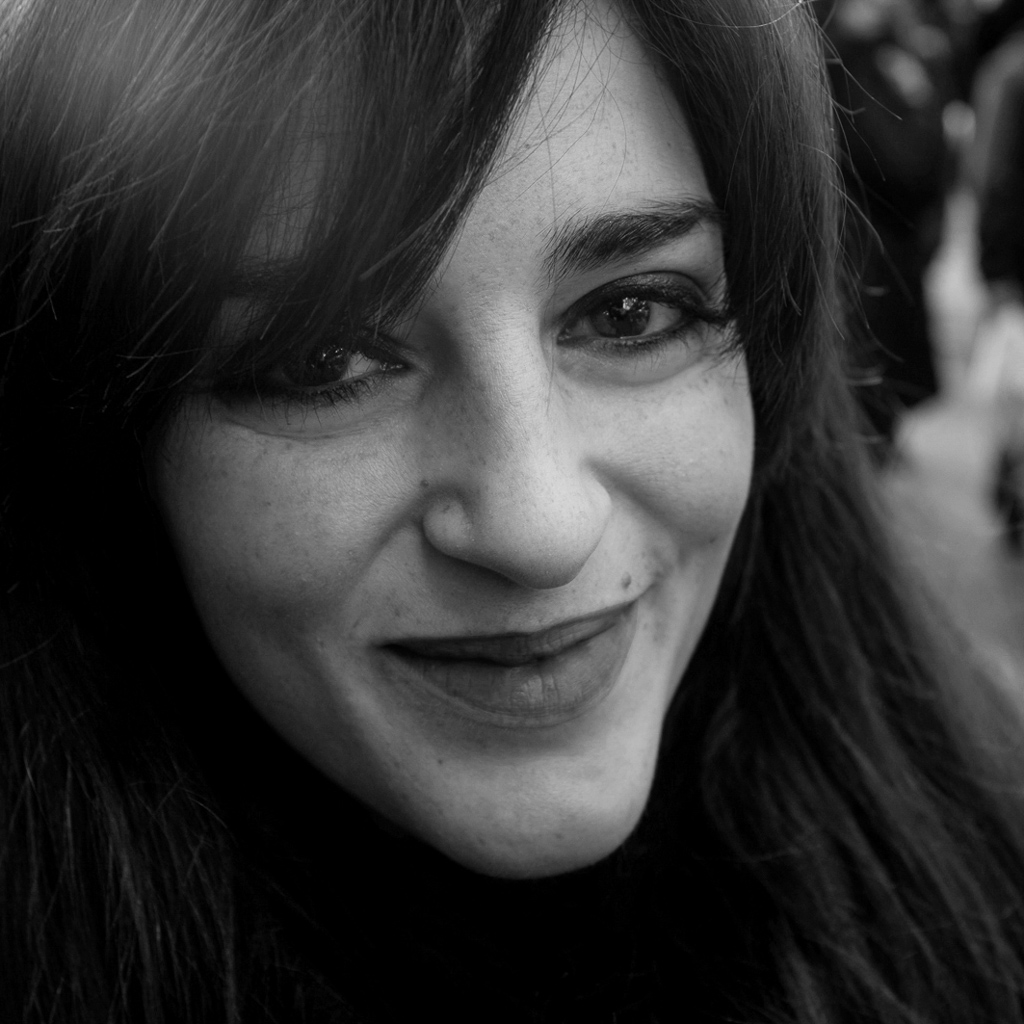But given the context, it soon comes to feel like a simulation of normalcy. One evening, we wander along Independence Square, lined with marble ministries and the presidential palace, and home to marble statues, timed fountains, and flashing lights that change color. Security guards wave us away from an enormous LED screen showing a group of men madly applauding the president. It’s impossible to tell if anyone is genuinely enthusiastic; my assumption as an outsider is that the only true enthusiasts in any totalitarian society are those people benefiting directly from it.
On the morning of our departure, we pull up to the luminous Ashgabat airport. It is an impressive building, opened in 2016, and looks like a stylized bird from outside. Inside, the ceiling glows with light; from some angles, the ceiling panels look like teardrops. It’s beautiful if overwhelming in its over-the-top glitz. Our guide tells me I can’t take any photos of it but there’s a glimpse of it in this video, which documents Turkmen citizens being prevented from leaving the country. Why are they leaving? Inflation is wildly out of control, unemployment is sky-high, and there are food shortages. And the government, worried about losing people, have quietly reimposed exit visas, a cruel Soviet tradition.
Turkmenistan evokes complicated emotions. The trip has felt absolutely worthwhile and I don’t regret a minute of it. The archaeological sites are, without hyperbole, amazing. The landscapes are striking and the cities, weird authoritarian modernism aside, are not without their charms. Of course, it’s impossible to lose a sense that this modernism is distastefully rooted in strongman corruption. But as the plane takes off, the main emotion I feel is relief. Tourists’ encounters with authoritarianism in a place like Turkmenistan may be superficial, a far cry from the experience of life there, but they’re also exhausting.
—-
